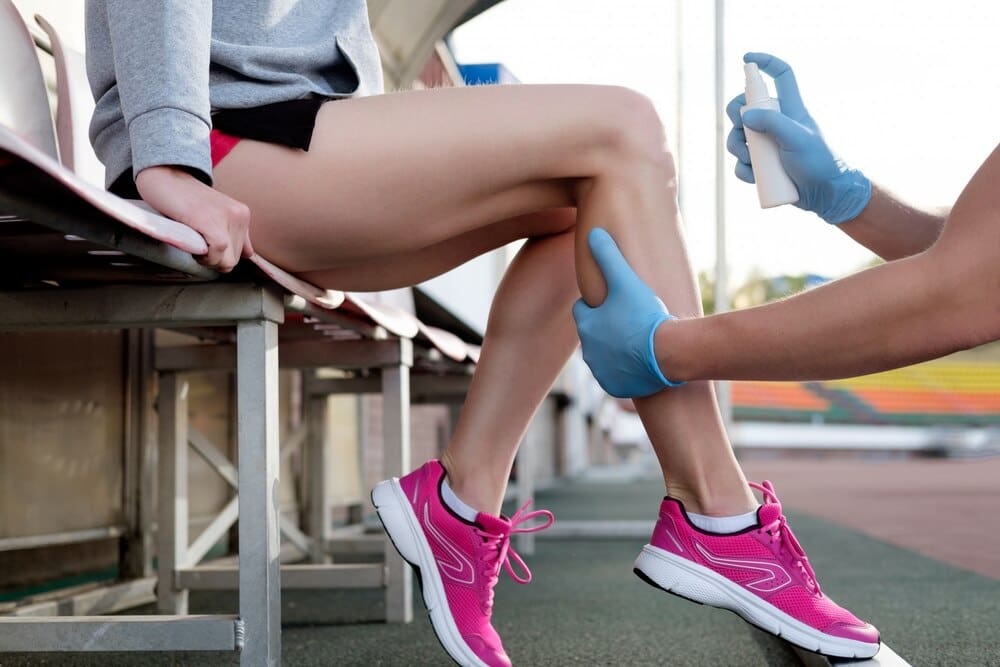For countless runners, from weekend joggers to elite marathoners, shin splints are a painful and frustrating reality that can derail a training plan in an instant. This common overuse injury, known clinically as Medial Tibial Stress Syndrome (MTSS), manifests as a nagging, throbbing pain along the inner edge of the shinbone (tibia). It primarily affects individuals who engage in repetitive, high-impact activities, and it occurs when the muscles, tendons, and bone tissue around the tibia become overworked and inflamed. The key to preventing this debilitating condition lies not in a single magic bullet, but in a comprehensive approach that addresses training volume, proper footwear, biomechanics, and targeted strength work, allowing athletes to build a resilient foundation for a long and pain-free running journey.
Understanding Shin Splints: More Than Just a Sore Shin
While most runners can point to where their shin splints hurt, understanding what’s happening beneath the skin is the first step toward effective prevention. MTSS is fundamentally a stress reaction. When you run, your lower leg muscles work hard to absorb impact and propel you forward.
If these muscles are overloaded, either through a sudden increase in training or underlying weakness, they can’t effectively handle the force. This stress is then transferred to the periosteum, a thin sheath of tissue that covers the bone. The result is inflammation and micro-tears in the muscle and bone tissue, leading to the characteristic pain of shin splints.
It’s crucial to distinguish this diffuse pain from the pinpoint, localized pain of a tibial stress fracture, which is a more serious injury involving a small crack in the bone itself. While shin splints can sometimes progress to a stress fracture if ignored, they are distinct conditions. If your pain is focused on a single, small spot that is tender to the touch, it is imperative to stop running and consult a medical professional.
The Primary Culprits: Why Do Shin Splints Happen?
Shin splints rarely develop from a single misstep. Instead, they are almost always the result of one or more contributing factors that place cumulative, excessive stress on the lower legs. Identifying your personal risk factors is essential for building a targeted prevention strategy.
Training Errors: The “Too’s”
The most common cause of shin splints is simply doing too much, too soon, too fast. Your bones, muscles, and connective tissues need time to adapt to the stress of running. When you rush this process, you invite injury.
This includes suddenly increasing your weekly mileage, adding too many high-intensity speed workouts without a proper base, or abruptly increasing the frequency of your runs. A classic example is a new runner who goes from the couch to running five days a week, or an experienced runner who doubles their mileage while training for a marathon.
Improper or Worn-Out Footwear
Your running shoes are your first line of defense against impact forces. Shoes that are worn out have lost their cushioning and support, transferring more shock up into your shins. Most experts recommend replacing running shoes every 300 to 500 miles.
Furthermore, wearing the wrong type of shoe for your foot mechanics can be a major problem. Runners with flat feet who overpronate (meaning their foot rolls excessively inward upon landing) need shoes with stability features to control that motion. Wearing a neutral shoe can exacerbate this issue and strain the lower leg muscles.
Hard Running Surfaces
Consistently running on hard, unforgiving surfaces like concrete or asphalt increases the impact forces traveling through your body with every footstrike. While it’s not always possible to avoid these surfaces, failing to vary them can contribute to overuse injuries.
Mixing in runs on softer surfaces like dirt trails, grass, or a track can give your legs a much-needed break from the constant pounding. This variation allows your body to adapt to different stimuli and reduces repetitive strain.
Biomechanical Inefficiencies and Muscle Imbalances
How you run matters. Poor running form, such as significant heel striking (landing hard on your heel with your foot far out in front of your body), can send a braking force and jarring impact straight up your leg.
Weakness in key muscle groups is another major factor. If your glutes, hips, and core are not strong enough to stabilize your pelvis, other muscles have to compensate. Often, the small muscles of the lower leg, like the tibialis anterior (the muscle on the front of your shin) and the calf muscles, take on this extra burden, leading to fatigue and injury.
A Proactive Plan: Your Complete Prevention Toolkit
Preventing shin splints requires a multi-faceted approach that is integrated into your regular training routine. Think of these strategies not as chores, but as essential investments in your running health.
1. Follow the 10% Rule
The golden rule of smart training progression is to increase your weekly mileage by no more than 10% from the previous week. This gradual increase gives your musculoskeletal system adequate time to adapt and strengthen in response to the training load, significantly reducing your risk of overuse injuries.
2. Invest in the Right Shoes (and Know When to Replace Them)
Visit a specialty running store for a gait analysis. Trained staff can observe you run on a treadmill and recommend shoes that match your specific foot type and pronation pattern. This is one of the single best investments you can make in your running health.
Track your shoe mileage using a running app or a simple log. Once you hit that 300-500 mile range, retire them from running and transition them to walking or casual wear. Don’t wait for them to look visibly worn out; the critical midsole cushioning is often the first thing to degrade.
3. Build a Resilient Body with Strength Training
Strength training is non-negotiable for injury prevention. A strong frame supports your running, improves efficiency, and protects your joints. Focus on these key areas at least two to three times per week.
Lower Leg Strength
Calf Raises: Stand on a step and lower your heels, then press up onto the balls of your feet. Do this with both straight knees (to target the gastrocnemius) and bent knees (to target the soleus).
Heel and Toe Walks: Walk around for 30-60 seconds on just your heels, then switch to walking on your toes. This strengthens the tibialis anterior and the calf muscles, respectively.
Hip and Glute Strength
Glute Bridges: Lie on your back with your knees bent. Squeeze your glutes and lift your hips toward the ceiling. Hold for a moment before lowering.
Clamshells: Lie on your side with your knees bent and stacked. Keeping your feet together, lift your top knee without rotating your pelvis. This targets the gluteus medius, a key hip stabilizer.
Single-Leg Deadlifts: Balancing on one leg, hinge at your hips to lower your torso toward the floor while extending the other leg straight back. This improves balance and hamstring/glute strength.
4. Refine Your Running Form
Focus on improving your running cadence—the number of steps you take per minute. Most recreational runners have a cadence that is too low. Increasing it by just 5-10% can make a huge difference.
A higher cadence naturally encourages you to land with your foot more underneath your center of mass, reducing over-striding and braking forces. Aim for a light, quick, and quiet footstrike, as if you’re running over hot coals. This simple cue can dramatically decrease impact on your shins.
5. Prioritize Mobility and Flexibility
While dynamic stretching (like leg swings and walking lunges) is best before a run, static stretching is crucial for post-run recovery. Hold stretches for 30 seconds after your muscles are warm.
Focus on stretching your calf muscles (both gastrocnemius and soleus) and your hamstrings. Additionally, use a foam roller to massage tight muscles, paying special attention to your calves, shins, and hamstrings to release tension and improve blood flow.
A Final Thought on Pain-Free Running
Shin splints are a warning sign from your body that something in your training or biomechanics is out of balance. By listening to that signal and proactively addressing the root causes, you can transform this common running ailment from an inevitable roadblock into a preventable issue. Building mileage gradually, wearing the correct footwear, committing to a consistent strength routine, and refining your form are the pillars of a sustainable and enjoyable running lifestyle. They empower you to not just chase new personal bests, but to do so with a body that is strong, resilient, and ready for the miles ahead.







